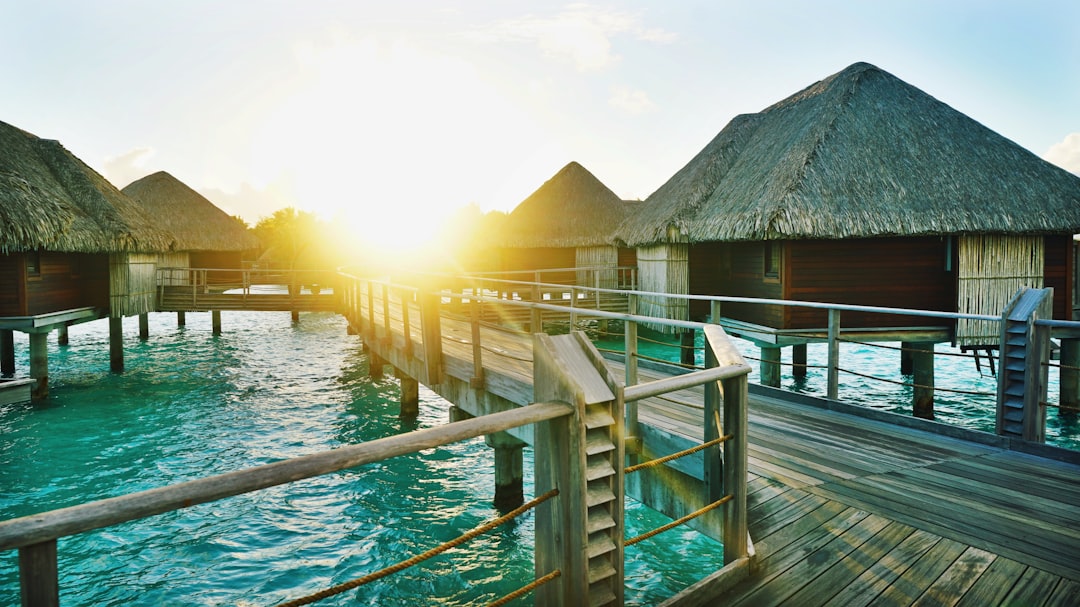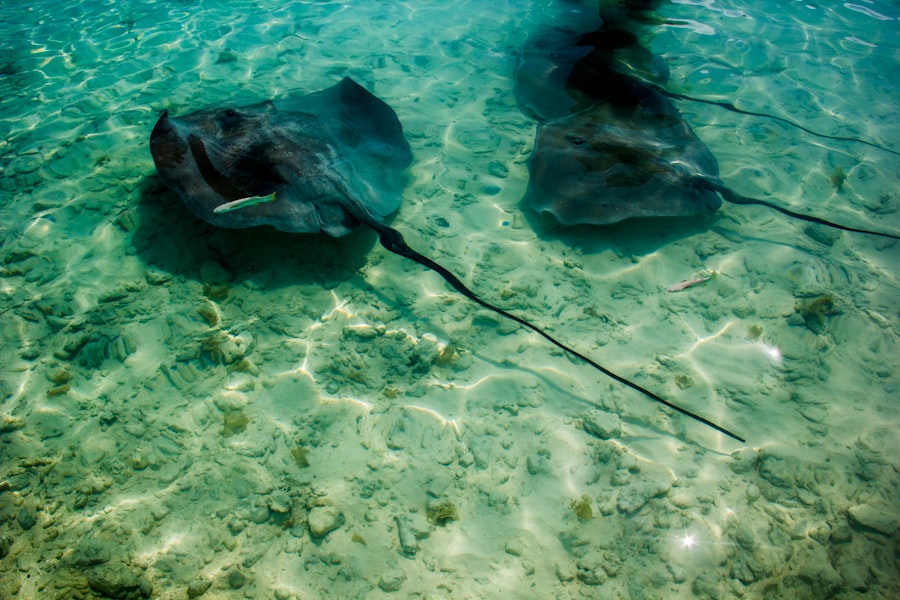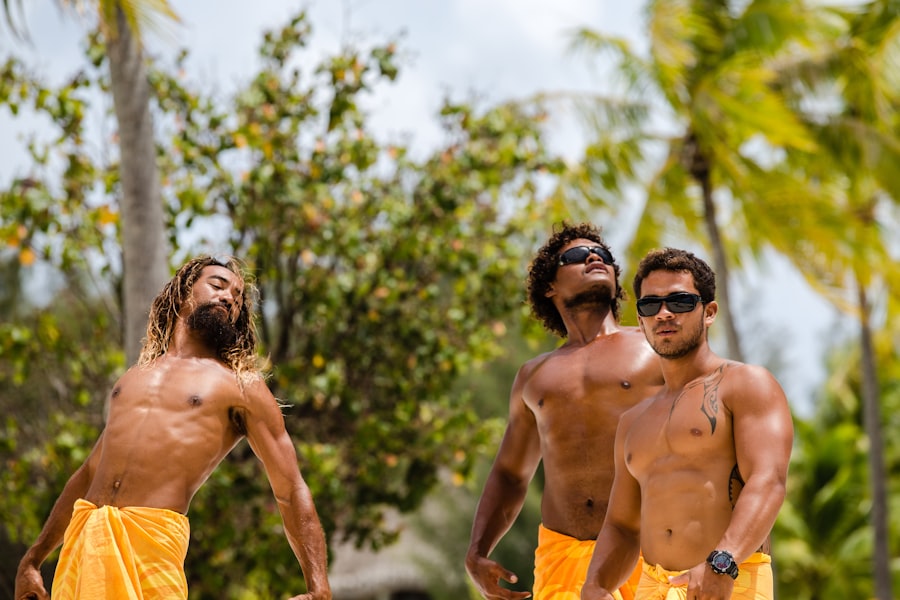
French Polynesia, an enchanting collection of islands scattered across the South Pacific Ocean, is a territory of France that boasts breathtaking landscapes, vibrant cultures, and a rich history. Comprising over 100 islands and atolls, the most famous of which include Tahiti, Bora Bora, and Moorea, this tropical paradise is renowned for its stunning lagoons, lush mountains, and coral reefs teeming with marine life. The archipelago covers an area of approximately 2,000 kilometers, yet its landmass is relatively small, making it a unique destination where the vastness of the ocean meets the intimacy of island life.
The islands of French Polynesia are divided into five main groups: the Society Islands, the Marquesas Islands, the Tuamotu Archipelago, the Gambier Islands, and the Austral Islands. Each group has its own distinct character and charm, offering visitors a diverse range of experiences. The Society Islands are perhaps the most well-known, attracting travelers with their luxurious resorts and stunning natural beauty.
In contrast, the Marquesas Islands are celebrated for their rugged landscapes and rich cultural heritage. This geographical diversity contributes to the allure of French Polynesia, making it a dream destination for adventurers, honeymooners, and those seeking relaxation alike.
Key Takeaways
- French Polynesia is a group of islands in the South Pacific, known for its stunning natural beauty and rich Polynesian culture.
- Top places to visit in French Polynesia include Bora Bora, Tahiti, Moorea, and the Marquesas Islands, each offering unique experiences and breathtaking landscapes.
- Unique sights and activities in French Polynesia include swimming with sharks and stingrays, exploring ancient Polynesian temples, and hiking to hidden waterfalls.
- Fun facts about French Polynesia include being the birthplace of the overwater bungalow and having a strong tradition of outrigger canoe racing.
- The culture and cuisine of French Polynesia are a blend of Polynesian and French influences, with traditional dance, music, and delicious dishes like poisson cru and fresh tropical fruits.
- Tips for traveling to French Polynesia include packing light, learning a few basic French phrases, and respecting the local customs and traditions.
Top Places to Visit in French Polynesia
When it comes to must-visit destinations in French Polynesia, Tahiti often tops the list. As the largest island in the archipelago and the administrative center of French Polynesia, Tahiti is a vibrant hub of culture and activity. Visitors can explore the bustling capital city of Papeete, where they can wander through local markets filled with fresh produce, handicrafts, and traditional Polynesian souvenirs.
The island’s stunning black sand beaches, such as Lafayette Beach and Point Venus, offer opportunities for sunbathing and swimming in crystal-clear waters.
Bora Bora is another iconic destination that captures the hearts of travelers from around the globe.
Often referred to as the “Pearl of the Pacific,” Bora Bora is famous for its turquoise lagoon surrounded by a barrier reef. The island’s luxurious overwater bungalows provide an unparalleled experience for those seeking romance and relaxation. Visitors can indulge in activities such as snorkeling with vibrant marine life, taking a boat tour around the lagoon, or simply lounging on the pristine beaches of Matira Point.
The breathtaking views of Mount Otemanu rising majestically from the lagoon further enhance Bora Bora’s reputation as a paradise on earth. Moorea, located just a short ferry ride from Tahiti, is another gem worth exploring. Known for its dramatic landscapes characterized by jagged mountains and lush valleys, Moorea offers a more laid-back atmosphere compared to its more famous neighbor.
The island is perfect for hiking enthusiasts who can trek through trails leading to panoramic viewpoints like Belvedere Lookout. Moorea’s beautiful beaches, such as Temae Beach and Cook’s Bay, provide opportunities for swimming and water sports. The island is also home to a variety of wildlife, including dolphins and rays, making it an ideal spot for eco-tourism.
Unique Sights and Activities in French Polynesia

French Polynesia is not just about stunning beaches; it also offers a plethora of unique sights and activities that cater to diverse interests. One of the most remarkable experiences is exploring the underwater world through snorkeling or scuba diving. The coral reefs surrounding the islands are among the most vibrant in the world, teeming with colorful fish, sea turtles, and even sharks.
The waters around Rangiroa, one of the largest atolls in the Tuamotu Archipelago, are particularly famous for their exceptional diving spots. The Tiputa Pass is renowned for its strong currents that attract large pelagic species, providing divers with unforgettable encounters. For those interested in cultural experiences, attending a traditional Polynesian dance performance is a must.
These performances often take place during festivals or at local resorts and showcase the rich heritage of the islands through music, dance, and storytelling. The vibrant costumes adorned with flowers and feathers add to the visual spectacle while providing insight into Polynesian mythology and history. Additionally, visitors can participate in workshops to learn traditional crafts such as weaving or tattooing, allowing them to connect with the local culture on a deeper level.
Another unique activity that draws visitors to French Polynesia is sailing through its pristine waters. Chartering a yacht or joining a sailing tour allows travelers to explore remote islands and hidden coves that are often inaccessible by land. The experience of gliding across the turquoise waters while taking in breathtaking views of uninhabited islands is nothing short of magical.
Many sailing tours also include opportunities for snorkeling or fishing along the way, making it an adventure that combines relaxation with exploration.
Fun Facts about French Polynesia
| Category | Fun Fact |
|---|---|
| Geography | French Polynesia is made up of 118 islands and atolls. |
| Language | The official languages are French and Tahitian. |
| Capital | The capital of French Polynesia is Papeete, located on the island of Tahiti. |
| Population | The population of French Polynesia is around 280,000 people. |
| Economy | Tourism and pearl farming are major contributors to the economy. |
French Polynesia is rich in history and culture, which is reflected in its many intriguing facts. One notable aspect is that it was first settled by Polynesians over 2,000 years ago. These early inhabitants navigated vast distances across the Pacific Ocean using only stars and ocean currents as their guides.
Their remarkable seafaring skills laid the foundation for a vibrant culture that continues to thrive today. Another interesting fact is that French Polynesia has a unique political status as an overseas collectivity of France. This means that while it enjoys a degree of autonomy in local governance, it remains under French sovereignty.
The territory has its own assembly and president but relies on France for defense and foreign affairs. This relationship has influenced various aspects of life in French Polynesia, including language and education. Additionally, French Polynesia is home to some of the world’s most stunning natural phenomena.
The islands are situated within the Pacific Ring of Fire, which makes them prone to volcanic activity. This geological feature has resulted in breathtaking landscapes characterized by towering mountains and lush valleys. Moreover, French Polynesia boasts some of the clearest waters on the planet due to its remote location and minimal pollution levels.
This clarity not only enhances visibility for divers but also contributes to the vibrant colors of its coral reefs.
The Culture and Cuisine of French Polynesia
The culture of French Polynesia is a rich tapestry woven from ancient traditions and modern influences. At its core lies a deep respect for nature and community, which is evident in various aspects of daily life. Traditional practices such as tattooing hold significant cultural importance; tattoos often tell stories about an individual’s lineage or achievements.
The art form has been passed down through generations and remains popular among both locals and visitors seeking to commemorate their time in this paradise. Cuisine in French Polynesia reflects its cultural diversity and abundance of fresh ingredients sourced from land and sea. Traditional dishes often feature fish as a primary ingredient due to its availability in surrounding waters.
One iconic dish is “poisson cru,” which consists of raw fish marinated in lime juice and coconut milk, served with fresh vegetables like cucumber and tomato. This dish exemplifies the islanders’ connection to their environment while showcasing their culinary creativity. Another staple of Polynesian cuisine is “ma’a tahiti,” which refers to traditional feasts that celebrate special occasions or gatherings.
These feasts often include a variety of dishes such as roasted pig cooked in an underground oven called “ahima’a,” taro root prepared in various ways, and fresh fruits like pineapple and papaya. Sharing meals during these gatherings fosters community bonds and reflects the importance of hospitality in Polynesian culture.
Tips for Traveling to French Polynesia

Traveling to French Polynesia requires some planning to ensure an enjoyable experience amidst its stunning landscapes and rich culture. One essential tip is to consider the best time to visit based on weather conditions and local events. The dry season typically runs from May to October when temperatures are pleasant and rainfall is minimal.
However, this period also coincides with peak tourist season; thus, booking accommodations well in advance is advisable. When packing for your trip, it’s important to consider both beachwear and attire suitable for cultural experiences. Lightweight clothing made from breathable fabrics will keep you comfortable in warm temperatures while allowing you to participate in traditional ceremonies or dining experiences without feeling out of place.
Additionally, don’t forget essentials like sunscreen, insect repellent, and snorkeling gear if you plan on exploring underwater. Lastly, embracing local customs can greatly enhance your travel experience in French Polynesia.
Participating in community events or visiting local markets will provide deeper insights into daily life on these islands while fostering meaningful interactions with residents. In summary, French Polynesia offers an unparalleled blend of natural beauty, cultural richness, and unique experiences that captivate travelers from around the world. Whether you seek adventure beneath the waves or tranquility on sun-kissed shores, this archipelago promises memories that will last a lifetime.
If you’re intrigued by the unique destinations and cultural insights found in our article on French Polynesia, you might also enjoy exploring another vibrant location featured in our series. Check out our related article on Brazil Facts and Places to Visit. This piece dives into the rich history, diverse ecosystems, and stunning landmarks of Brazil, offering a comprehensive guide for travelers and geography enthusiasts alike. Just like French Polynesia, Brazil boasts an array of breathtaking sights and deep cultural heritage that are sure to captivate any visitor.
FAQs
What is French Polynesia?
French Polynesia is an overseas collectivity of France located in the South Pacific Ocean. It is made up of 118 islands and atolls, with the most well-known being Tahiti and Bora Bora.
What is the capital of French Polynesia?
The capital of French Polynesia is Papeete, which is located on the island of Tahiti.
What are some popular places to visit in French Polynesia?
Some popular places to visit in French Polynesia include Bora Bora, Moorea, Tahiti, Raiatea, and Huahine. These islands are known for their stunning beaches, clear blue waters, and vibrant marine life.
What are some of the main attractions and sights in French Polynesia?
Some of the main attractions and sights in French Polynesia include the lagoon of Bora Bora, the Belvedere Lookout in Moorea, the Arahurahu Marae in Tahiti, and the Taputapuatea Marae in Raiatea. Visitors can also enjoy activities such as snorkeling, diving, and hiking in the lush landscapes.
What is the official language of French Polynesia?
The official language of French Polynesia is French, but Tahitian is also widely spoken.
What is the currency used in French Polynesia?
The currency used in French Polynesia is the CFP franc, which is pegged to the euro.



